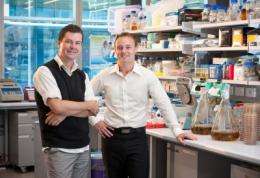Disarming disease-causing bacteria

(PhysOrg.com) -- New treatments that combat the growing problem of antibiotic resistance by disarming rather than killing bacteria may be on the horizon, according to a new study.
Published in Nature Structural and Molecular Biology, research led by Monash University showed a protein complex called the Translocation and Assembly Module (TAM), formed a type of molecular pump in bacteria. The TAM allows bacteria to shuttle key disease-causing molecules from inside the bacterial cell where they are made, to the outside surface, priming the bacteria for infection.
Lead author and PhD student Joel Selkrig of the Department of Biochemistry and Molecular Biology at Monash said the work paves the way for future studies to design new drugs that inhibit this process.
"The TAM was discovered in many disease-causing bacteria, from micro-organisms that cause whooping cough and meningitis, to hospital-acquired bacteria that are developing resistance to current antibiotics," Mr. Selkrig said.
“It is a good antibacterial target because a drug designed to inhibit TAM function would unlikely kill bacteria, but simply deprive them of their molecular weaponry, and in doing so, disable the disease process."
“By allowing bacteria to stay alive after antibiotic treatment, we believe we can also prevent the emergence of antibiotic resistance, which is fast becoming a major problem worldwide."
The Monash team, led by Professor Trevor Lithgow from the Department of Biochemistry and Molecular Biology, showed the TAM was made of two protein parts, TamA and TamB, which function together to form a machine of molecular scale.
Together with colleagues at the University of Melbourne, they compared normal virulent bacteria to mutant strains of bacteria engineered to have no TAM.
"We noticed that proteins important for disease were missing in the outer membrane of the mutant bacteria,” Mr. Selkrig said.
“The absent proteins help bacteria to adhere to our bodies and perform disease-related functions.”
Mr. Selkrig said the next step for the group was to dissect the molecular mechanism of how the TAM complex functions and, in collaboration with researchers at the Monash Institute of Pharmaceutical Sciences, design an antibiotic that inhibits the TAM in bacteria.
Journal information: Nature Structural and Molecular Biology
Provided by Monash University
















